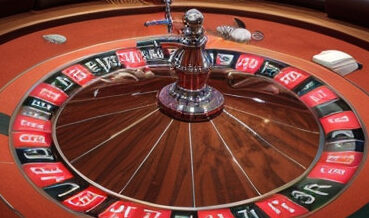The $1,200 handpay threshold for slot machine jackpots in the U.S. originates from the Revenue Act of 1977, when the IRS established that any slot win of $1,200 or more required the casino to issue a W-2G tax form and withhold taxes if necessary. At the time, $1,200 was a significant amount, equivalent to nearly $6,000 in today’s money due to inflation.

There’s a growing movement to increase this threshold, primarily due to inflation. What was a significant sum in 1977 is now a much more common win, leading to frequent handpays and increased administrative burden for casinos.
The IRS has acknowledged the need for change, and there’s a possibility that the threshold may be raised to $5,800 in the near future. This potential change is supported by both casino operators and players, who believe it would streamline the payout process and reduce unnecessary paperwork.
The $1,200 handpay threshold for slot machine jackpots in the United States has its roots in the Tax Reform Act of 1984. As part of this legislation, the Internal Revenue Service (IRS) required casinos to report and withhold taxes on certain slot machine winnings.
Key Milestones in the History of the $1,200 Handpay Threshold:
- 1984: The Tax Reform Act introduces the requirement for casinos to report and withhold taxes on slot machine winnings exceeding $1,200.
- 1985: The IRS begins enforcing the new tax regulations, and casinos start issuing W-2G forms to winners of jackpots above $1,200.
- 2007: The IRS increases the threshold for reporting slot machine winnings from $1,000 to $1,200, effective for tax year 2008.
Changes and Proposed Reforms:
- 2018: The IRS announces plans to revisit the $1,200 threshold, considering inflation and the increasing number of jackpot wins.
- 2020: The IRS proposes raising the threshold to $5,000, but the change is put on hold due to the COVID-19 pandemic.
- 2022: The Shifting Limits on Thresholds (SLOT) Act was introduced in Congress to increase the threshold from $1,200 to $5,000 and adjust for inflation in the future.2023: The AGA continued pushing for the change, arguing that modernizing the rule would reduce unnecessary tax reporting and improve casino efficiency. Representatives Dina Titus (D-NV) and Guy Reschenthaler (R-PA) introduced the Shifting Limits on Thresholds (SLOT) Act
- 2024: There is growing bipartisan support, but as of now, the change has not yet been passed into law.
- Ongoing: The IRS is expected to revisit the proposed changes to the threshold, potentially leading to an increase in the near future.
Reasons for Change
- Inflation has significantly decreased the value of the $1,200 threshold since 1977.
- The outdated threshold has increased compliance burdens for taxpayers and operating costs for casinos.
- It has created paperwork backlogs and operational burdens for the IRS.
Despite these efforts, implementation of changes remains uncertain. The IRS has the discretion to make such a change, but a timeline for potential implementation has not been established. While there is support from various stakeholders, including the casino industry and some lawmakers, the process of updating this regulation has been ongoing for several years without significant progress
As of February 2025, the $1,200 tax reporting threshold for slot machine jackpots, established in 1977, remains unchanged. However, significant momentum has built toward increasing this outdated limit.


